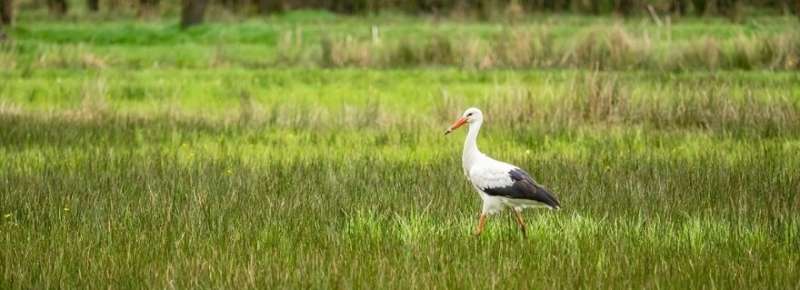Common breeding birds are doing better in the Netherlands than in Europe

On average, Dutch breeding birds have become more numerous in the period 1980-2010. The common species have even done better than birds in other European countries. Farmland birds are an exception: they declined sharply both in the Netherlands and elsewhere in Europe.
Dat blijkt uit onderzoek van de stichting Centrum voor Landbouw en Milieu (CLM) en het Centrum voor Milieuwetenschappen van de Universiteit Leiden (CML), online open access gepubliceerd in het Britse tijdschrift Bird Study.
In Europe, rarity played a key role
The authors looked for factors that could explain the increase and decrease of bird species in the Netherlands. They suggested that habitattype was the most important factor: for example, the intensification of agriculture could explain the decline in farmland birds.
But in 2015, a British study on bird trends in Europe from 1980 to 2010 appeared with a surprising conclusion: it was not habitat type but bird rarity that was most closely related to developments in bird populations: Common species became more rare and rare species became less rare. Wil Tamis of the CML offers a possible explanation for this population development: "It could be, for example, that in conservation policy there is more attention for these rare species, which caused them to increase in number."
Species in all rarity classes in the Netherlands are doing better
Helias Udo de Haes of the CML explains that they predicted a different trend in the Netherlands: "We suspected that in the Netherlands, it was exactly the other way around. But neither of the hypotheses proved tenable: in the Netherlands, species in all rarity classes increased, which is good news for nature. We did confirm our hypothesis that in the Netherlands habitat is a more important factor than rarity."
Nature policy pays off
According to the researchers, the fact that the habitat factor was not dominant in the European study was probably due to differences between the European regions: the intensification of agriculture occurred in most regions, but not in others. On average, the effect of habitats is therefore not so great at the European level.
In the Netherlands, it was mainly the waterfowl, marsh and forest birds that improved significantly. The main causes are probably the expansion of areas with water, marsh and forest, the improvement of water quality and the aging of the forests. In addition, dead trees remained in the forest more often. Thus, nature policy appears to be effective for those areas.
Larger bird species do better
Based on impressions from the field, the authors had also expected larger bird species to do better than smaller ones. For example, they saw increasing numbers of storks, herons, buzzards and geese. They did indeed find a difference, but it did not turn out to be statistically significant: "The explanation is probably that the British had left the geese out of their study," says Wouter van der Weijden of the Centre for Agriculture and Environment. "To keep the comparison pure, we had to do the same, even though the geese in the Netherlands have actually become more numerous. All in all, we dare to conclude that the larger species are indeed doing better than the smaller ones."
Impact insect decline not yet visible
Finally, the authors also expected that the food choice of birds would have an effect on the increase and decrease of different species. The researchers based their suspicion on, for example, the alarming reports about the decline of insects. But the group of insectivorous birds did not do worse in the Netherlands than the other groups.It is possible that the strong decline in insects only took place after 2000, i.e. in the last decade of their research period, which made it difficult to identify the effect.
Both regional and European analysis for targeted nature policy
According to Udo de Haes research illustrates the importance of regional as well as European trend analyses. "It reveals various trends and factors. It is important to combine both scale levels for a targeted nature policy. It has also become clear once again that we have to pay much more attention to the birds of the farmlands. In addition, research is needed into trend differences in a wider range of habitats (such as urban, coastal, heathland and dune), and a wider range of species groups. Think of subgroups of insectivores, generalists versus specialists, migratory birds versus resident birds and protected versus non-protected species. That could be very informative."
Explore further
No comments:
Post a Comment